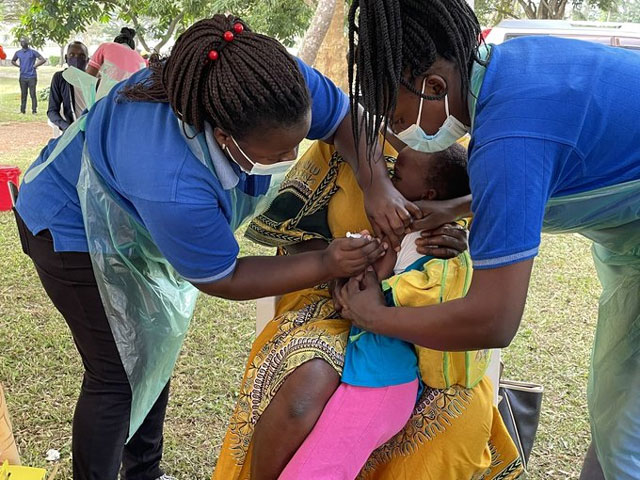
Kampala, Uganda | THE INDEPENDENT | Results of the Uganda Demographic Health Survey (UDHS), conducted every five years, show that the country has not made significant progress in reducing fertility, teenage pregnancy, and child mortality, among other indicators.
According to results released by the Uganda Bureau of Statistics (UBOS) on Thursday, the country still has high fertility rates, estimated at 5.2 children per woman. This represents a decrease of only two points from 5.4 children per woman in 2016 when the previous survey was conducted. The highest levels of fertility were recorded in the regions of Karamoja, Busoga, and Bunyoro, whereas the lowest rates were observed in Kampala.
Hellen Namirembe Nviiri, the Director of Population and Social Statistics at UBOS notes that in Karamoja, the fertility rate is as high as 6.7 children per woman, while Kampala and Kigezi, have the lowest rates, it’s at 4 children per woman. UBOS collected data on various aspects, including marriage, family planning use, sexual activity, maternal and child health, domestic violence, access to HIV information, and nutrition.
They interviewed 19,077 women and 5,097 women in both urban and rural households across the country in 2022. When it comes to child health, while a high number of people are taking their children for immunization, there have been no significant changes in mortality indicators compared to 2016 when a similar survey was last conducted. In 2022, 36 out of every 1,000 infants were dying, a slight decrease from 43 out of every 1,000 in 2016.
For children below the age of five, 52 out of every 1,000 were dying, showing a decrease of 12 from the 64 recorded in 2016. Regarding neonatal mortality, which represents babies dying before one month of age, Namirembe states that 22 out of every 1,000 babies are dying, down from 29 in 2016. She attributes this to various diseases, including acute respiratory illnesses.
At the time of the survey, researchers found that two-thirds of children were battling a respiratory illness, while seven in ten had diarrhea.
In response to these findings, Health Minister Dr. Jane Ruth Aceng acknowledged that while there are no significant reductions, the small strides made indicate that some interventions, such as increasing the number of vaccines on the schedule, have had an impact.
She emphasizes that these results highlight critical needs in the sector to bring about significant changes, including increased funding, improved health education, and the hiring of more human resources for health.
However, Dr. Aceng raised concerns about the method used by UBOS to collect immunization data, stating that it doesn’t provide a true picture. Researchers relied on whether households had immunization cards, which she believes are challenging to store. She suggests the need to digitize immunization data collection.
Dr. Aceng also commented on teenage pregnancies, which have stagnated at 24% according to the new data and even increased in urban areas from 19% to 21%. She believes the issue lies in awareness and points out that having 1.6 million babies born per year is alarming. However, the same results show that modern family planning use has not significantly changed.
She advocates for more efforts to educate people on how to use and the importance of family planning. On the other hand, Prof. Fredrick Makumbi, a researcher based at Makerere University School of Public Health, suggests that these results should guide the Ministry of Health in directing resources. He highlights that more women are now delivering at health facilities, resulting in a decrease in maternal mortality from 333 per 10,000 live births in 2016 to 189 in 2022.
*****
URN
 The Independent Uganda: You get the Truth we Pay the Price
The Independent Uganda: You get the Truth we Pay the Price


